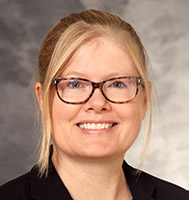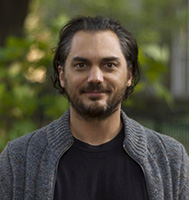
Researchers at the University of Wisconsin plan to study how technology and digital media (TDM) influence health behaviors and well-being in adolescents, with an emphasis on both positive and negative impacts of social media.
Funded by the Eunice Kennedy Shriver National Institute of Child Health & Human Development (NICHD) and a University of Wisconsin–Madison Vice Chancellor for Research and Graduate Education (OVCRGE) matching grant, the study team is expected to receive more than $8 million over five years for its project “A longitudinal study investigating TDM and adolescent health and development: Brain, behavior, and well-being.”
“Decades of past research have shown that two major sources of influence on adolescent health and behavior are peers and the media,” said Megan Moreno, MD, MSEd, MPH, professor, Division of General Pediatrics and Adolescent Medicine, and the study’s principal investigator. “Digital media today, particularly social media, is a powerful combination of those influences as it is peer-generated media. Given the near-ubiquitous exposure to and use of social media by youth, it is critical to understand the ways that technology impacts adolescent health.”
The study will take place over two years, observing the social media use of 400 adolescents ages 13-15 from the state of Wisconsin. Researchers plan to gather data on participants in a variety of ways including self-report methods like surveys and in-depth interviews, functional magnetic resonance imaging (fMRI) scans, and Ecological Momentary Assessments (EMA), which are questions participants can answer via text message to get in-the-moment health screening information.
In addition to Moreno, the research team consists of co-principal investigators Chris Cascio, PhD, assistant professor, UW School of Journalism and Mass Communication, and Ellen Selkie, MD, MPH, assistant professor, Division of General Pediatrics and Adolescent Medicine.
The study is broken into three projects, each led by a member of the research team. The projects will share participants and data, but will each examine a different area of the impact of TDM on youth health and well-being.
Moreno’s project focuses on behavior, aiming to better understand how adolescents perceive and are influenced by content that they create and consume on social media, and how that content impacts their behavior.

Selkie’s project focuses on the ways different types of social media content relate to socioemotional well-being concepts such as stress, loneliness, social connectedness, or self-esteem, which can be risk factors for mental and physical health problems. Her project will look at interactions with both self-generated and other-generated content on social media, with a focus on LGBTQIA+ youth. She hopes to provide context to the individual experiences adolescents have on social media over time and how they relate to brain changes and health behavior.
“So much of adolescent life happens online now, and it’s pretty clear that there isn’t a clear line between online and offline life for most kids,” Selkie said. “Therefore, we must examine how the online environment affects adolescent development, just as we have for other environments like school and home.”

Cascio’s project will use fMRI to understand how positive and negative TDM experiences relate to mental and behavioral health outcomes. This includes neuroimaging for a group of 150 participants in eighth grade, in order to capture the transition from middle school to high school and whether it changes reactivity to experiences with TDM.
“The study will be interesting in that it will track both positive and negative aspects,” Cascio said. “Social media use, especially in teen years, has a bad rap. Parents often think it just causes problems, or it’s no good. We’re going to try to understand it more broadly, in terms of what aspects of social media use are good and which are bad.”
Researchers hope to share the findings of their study with the same community partners they plan to use for participant recruitment. By talking about what they’ve learned with students and their parents, they hope to raise awareness of social media’s impact on health and behavior.